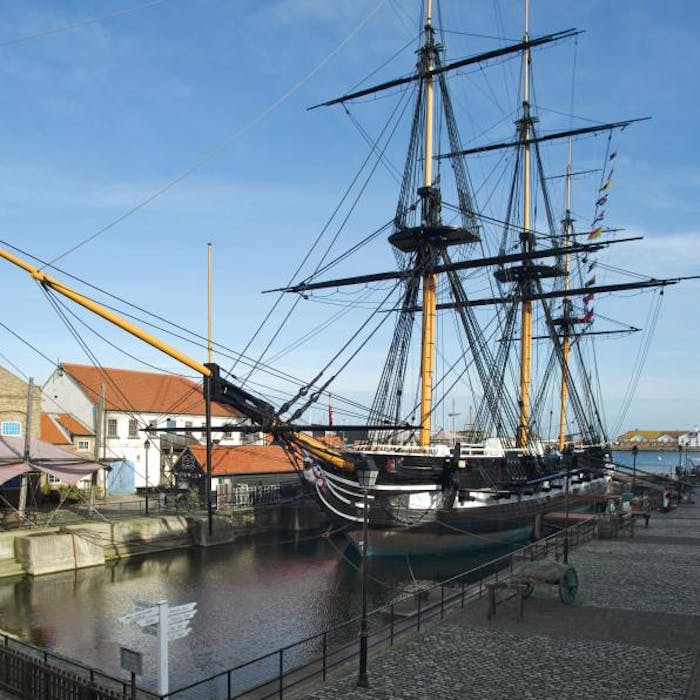
HMS Trincomalee - Britain's oldest floating warship moored in Hartlepool
HMS Trincomalee is the second oldest floating ship in the world, and the centrepiece of the National Museum of the Royal Navy in Hartlepool.
She is a Royal Navy sailing frigate, built in 1816/17, shortly after the end of the Napoleonic Wars. Along with HMS Unicorn, the ship is one of just two surviving British frigates of the era, and is the oldest floating British frigate.
The ship was named Trincomalee after the 1782 Battle of Trincomalee off the Ceylon (Sri Lanka) port of that name. She was built from 1816 in Bombay out of teak, because oak was in short supply due to the shipbuilding demands for the Napoleonic Wars.
HMS Trincomalee launched in 1817, when Captain Philip Henry sailed her from India to Portsmouth Dockyard. On her maiden voyage, she arrived at Saint Helena in 1819, where she stayed for 6 days. She was then placed in reserve until 1845, when she was re-armed with fewer guns giving greater firepower, and had her stern reshaped.
In 1847, Trincomalee served on the North American and West Indies station of the British Navy. During this time, she attended riots in Haiti, and steps to prevent a threatened invasion of Cuba, and served on an anti-slavery patrol in the Pacific Ocean.
Between 1860 and 1897 she was moored and mast-less in Sunderland, then West Hartlepool, and finally in Southampton, before being sold to shipbreakers. Entrepreneur George Wheatley Cobb purchased and restored her, and renamed her Foudroyant in honour of his earlier ship that had been wrecked in 1897. On Cobb's death in 1932, she was towed to Portsmouth and served as accommodation for youth trainees.
After World War Two, when used as a store ship, she was demobilised and used for youth sea cadet training, under the stewardship of the Foudroyant Trust. In 1986, the Trust decided to restore her to her original condition, and reinstate her former name. The restoration took place in Hartlepool, and was completed in 2001.
She is now listed as part of the National Historic Fleet and is the centrepiece of the National Museum of the Royal Navy in Hartlepool.
Further reading
Links to external websites are not maintained by Bite Sized Britain. They are provided to give users access to additional information. Bite Sized Britain is not responsible for the content of these external websites.
